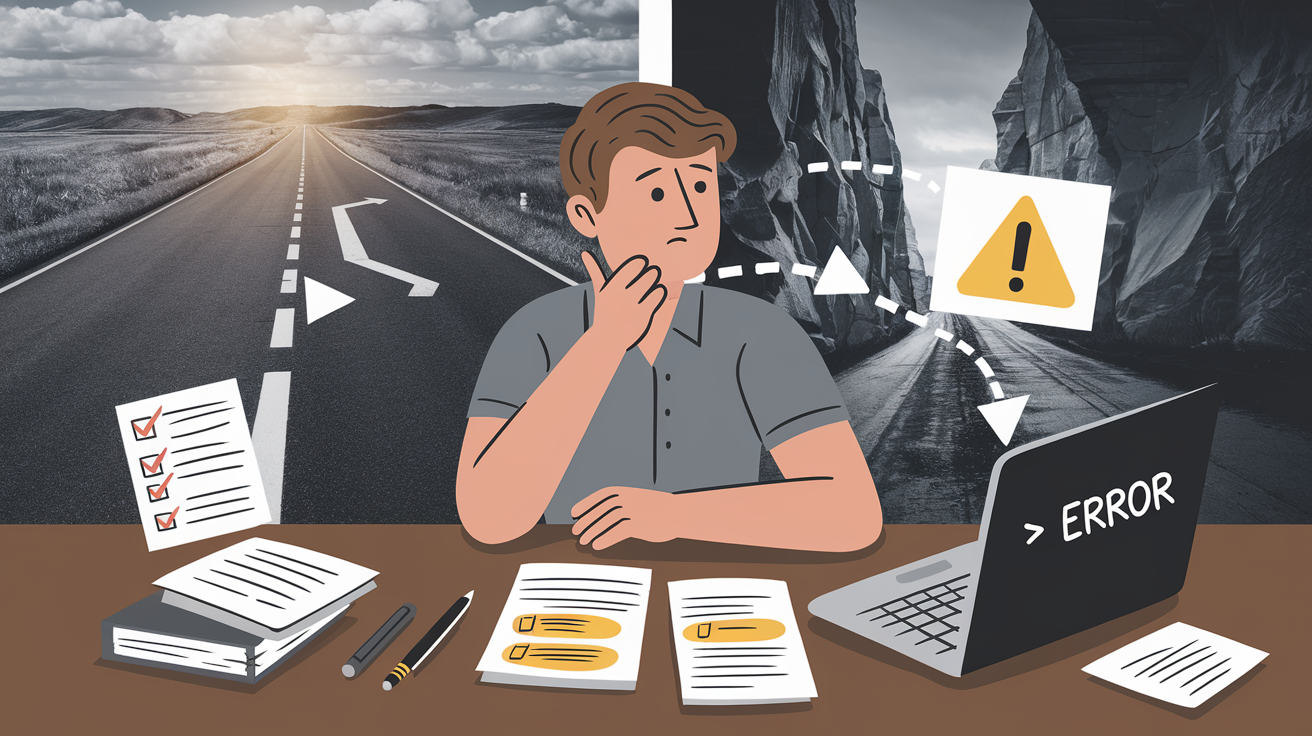

E-books have revolutionized the way we read and share knowledge, offering aspiring authors a chance to publish their work without the hurdles of traditional publishing. Self-publishing e-books has emerged as a powerful way to share your expertise, creativity, or story with a global audience, all while maintaining control over your content and profits. Whether you’re an experienced writer or just starting, learning how to create and sell e-books is an opportunity to reach readers and generate income on your terms.
In this guide, we’ll walk you through the essentials of self-publishing, from crafting compelling content and designing a standout cover to choosing the best platforms and marketing strategies. By the end, you’ll have the tools and confidence to successfully create, publish, and sell your e-book.
1. Understanding the Basics of Self-Publishing
Self-publishing e-books has become a game-changer for authors, offering a direct path to reaching readers without relying on traditional publishing houses. Unlike traditional methods, self-publishing allows you to maintain creative control, set your price, and keep a larger share of the profits. With platforms like Amazon Kindle and Smashwords, the process is more accessible than ever.
Benefits of Self-Publishing
- Creative Freedom: You have full control over your content, cover design, and marketing approach.
- Faster Time-to-Market: Traditional publishing can take months or even years, but self-publishing e-books can have your work live within days.
- Global Reach: Online platforms give your e-book access to readers around the world.
How Self-Publishing Compares to Traditional Publishing
Traditional publishing requires navigating literary agents, lengthy contract negotiations, and the potential for rejection. Self-publishing, on the other hand, eliminates these barriers, allowing authors to focus on their content and readers. However, with this freedom comes responsibility—you’ll handle everything from e-book formatting to marketing.
Tools for Self-Publishing
To make your journey smoother, here are a few tools and resources to consider:
- Writing and Formatting Tools: Scrivener, Microsoft Word, and Vellum help you format your e-book for platforms like Amazon Kindle.
- Distribution Platforms: Amazon Kindle Direct Publishing (KDP), Draft2Digital, and Smashwords offer easy ways to publish and distribute your e-book.
- Cover Design Software: Canva and Adobe Spark are excellent for creating professional-looking e-book covers.
Understanding these basics will set the foundation for successfully creating and selling your e-book. In the next section, we’ll delve into how to craft and format your e-book for a seamless reading experience.
2. Crafting and Formatting Your E-Book
The heart of any successful e-book is its content and presentation. Readers are drawn to well-crafted e-books that deliver value and are easy to navigate. According to a 2023 survey, 68% of readers prioritize readability and clear formatting when purchasing e-books, highlighting the importance of getting this step right.
Choosing the Right Topic or Niche
Start by identifying a topic that aligns with your expertise and resonates with your target audience. Niche subjects often perform well because they cater to a specific group of readers looking for detailed, focused information. For instance, e-books on “budget-friendly meal planning” or “productivity hacks for remote workers” cater to popular interests.
- Pro Tip: Use keyword research tools like Google Keyword Planner or Ubersuggest to identify trending topics with high search volume but low competition.
Related: 5 Profitable E-Book Topics to Kickstart Your Self-Publishing Journey
Writing Engaging and Valuable Content
Once you’ve chosen your topic, focus on creating content that is both informative and engaging. Consider breaking your e-book into clear, concise sections with headings to improve readability. A study by Nielsen Norman Group found that 79% of people skim online content, so using bullet points, lists, and short paragraphs can keep readers engaged.
- Actionable Tip: Start with a compelling introduction that outlines the value your e-book offers, and end each chapter with a summary or actionable takeaway.
Formatting Tips for a Professional Finish
Proper formatting ensures your e-book is easy to read on various devices, from smartphones to e-readers like the Kindle. Here are a few key formatting tips:
- Choose the Right Font: Use clean, readable fonts like Times New Roman, Arial, or Georgia.
- Structure Your Text: Include a clickable table of contents and consistent chapter headings.
- Add Visual Elements: Graphics, charts, or images can enhance comprehension and break up text-heavy sections.
Tools for E-Book Formatting
- Vellum: Ideal for creating professional e-book formats for Kindle, Apple Books, and more.
- Calibre: A free tool that converts your manuscript into multiple e-book formats.
- Scrivener: A writing tool that includes formatting capabilities for e-books.
Proper crafting and formatting not only enhance the reader’s experience but also boost your credibility as an author. With a well-structured e-book in hand, you’ll be better positioned to capture your audience’s attention and build trust. Next, we’ll explore how to design an eye-catching cover that draws readers to your work.
3. Designing an Eye-Catching E-Book Cover
Your e-book cover is the first impression readers have of your work—it’s your primary marketing tool. According to a 2022 survey by BookBaby, 51% of readers admitted they’ve chosen a book solely because of its cover. A well-designed cover not only grabs attention but also conveys the essence of your e-book, making it a critical factor in attracting potential buyers.
Why Is a Professional-Looking Cover Important?
A common concern among first-time authors is whether investing time and resources into the cover design is worth it. The answer is a resounding yes. An unprofessional or cluttered cover can deter readers, no matter how valuable the content inside may be. In a crowded market, your cover serves as your book’s ambassador, convincing readers to click and explore further.
Key Elements of Effective Cover Design
- Simplicity and Clarity: Avoid overloading your cover with too many elements. Use one focal point, such as a striking image or bold title.
- Readable Typography: Your title should be legible, even when viewed as a small thumbnail. Choose fonts that match the tone of your content—modern for tech topics, playful for children’s e-books, etc.
- Colors That Pop: Use contrasting colors to make your cover stand out. Tools like Canva’s color palette generator can help you pick complementary tones.
- Relevant Imagery: The imagery should hint at your e-book’s subject matter. For example, a cookbook might feature mouthwatering dishes, while a self-help book might use calming or motivational visuals.
DIY vs. Hiring a Professional Designer
Many authors wonder whether they should design their e-book cover themselves or hire a professional. Here’s a comparison to help you decide:
- DIY Design: Great for authors on a budget. Tools like Canva, Adobe Spark, and Book Brush offer templates and easy-to-use features for creating polished covers.
- Professional Design: If you have the budget (typically $50–$500), hiring a designer can elevate your cover with custom visuals and professional expertise. Websites like Fiverr or 99designs are excellent platforms to find talented designers.
Common Cover Design Mistakes to Avoid
- Cluttered Layout: Too many elements can overwhelm potential readers.
- Low-Quality Images: Blurry or pixelated graphics immediately signal a lack of professionalism.
- Mismatch with Genre: Ensure your design aligns with your e-book’s genre. For example, a thriller should look dark and suspenseful, while a romance cover might use softer tones and fonts.
Frequently Asked Questions
- Can I use free images for my cover?
Yes, websites like Unsplash and Pixabay offer royalty-free images. However, make sure the licensing terms allow for commercial use. - Do I need a different cover for each platform?
Generally, no. Most platforms accept the same cover, but it’s essential to check their specific dimensions and requirements. - What’s the ideal cover size?
For most platforms, the recommended size is 2560 x 1600 pixels with a 2:3 aspect ratio.
A visually appealing and professionally designed cover can significantly boost your e-book’s chances of success. With your content formatted and your cover ready, the next step is choosing the right platform to showcase your e-book to the world.
4. Choosing the Best Platforms to Sell Your E-Book
Deciding where to sell your e-book is a crucial step in reaching your target audience. The right platform can expand your reach, streamline the publishing process, and increase your sales potential. With so many options available, it’s essential to choose the one that aligns with your goals.
Top Platforms for Selling E-Books
- Amazon Kindle Direct Publishing (KDP)
- As the largest e-book marketplace, Amazon KDP offers access to millions of readers globally.
- Benefits include easy setup, royalty options (70% or 35%, depending on price), and exclusive programs like Kindle Unlimited.
- Pro Tip: Optimize your book description with keywords to improve discoverability on Amazon’s search engine.
- Smashwords
- Smashwords distributes your e-book to multiple retailers, including Apple Books and Barnes & Noble.
- Ideal for reaching audiences beyond Amazon and diversifying your sales channels.
- Draft2Digital
- Similar to Smashwords, Draft2Digital simplifies the publishing process and offers excellent formatting tools.
- Known for its user-friendly interface and wide distribution network.
- Your Own Website
- Selling directly from your website gives you complete control over pricing, branding, and audience engagement.
- Use platforms like Gumroad or Payhip to set up a secure e-book storefront.
Comparison of Platform Features
| Platform | Best For | Key Feature | Fee Structure |
|---|---|---|---|
| Amazon KDP | Broad audience reach | Exclusive programs like Kindle Select | 30%-65% royalty fees |
| Smashwords | Multi-retailer distribution | Wide retailer network | 15% distribution fee |
| Draft2Digital | Ease of use | Free formatting tools | 15% distribution fee |
| Own Website | Maximizing profits | Full control of branding and sales | Payment processor fees only |
Tips for Success on E-Book Platforms
- Optimize your e-book’s metadata, including title, subtitle, and keywords, to improve searchability.
- Use compelling descriptions and reviews to build trust and entice buyers.
- Experiment with pricing strategies to find the sweet spot for your audience.
With the right platform in place, you’re ready to launch your e-book and start building a loyal readership. But publishing is just the beginning—strategic marketing is key to driving consistent sales.
5. E-Book Marketing Strategies to Maximize Sales
Once your e-book is live, marketing is the next step to attract readers and drive sales. Even the best e-books won’t succeed without visibility. The good news is that there are plenty of cost-effective strategies to promote your e-book.
Building an Audience Before Launch
One of the most common mistakes new authors make is waiting until their e-book is published to start marketing. Instead, build anticipation by:
- Creating a Landing Page: Use tools like Wix or Squarespace to showcase your e-book’s value and capture email signups.
- Leveraging Social Media: Share sneak peeks, testimonials, and updates to generate buzz.
- Networking in Communities: Join forums, Facebook groups, or subreddits where your target readers hang out and contribute valuable insights.
Related: Social Media Marketing for Authors: Strategies to Sell More E-Books
Using Email Marketing for Promotion
Email marketing remains one of the most effective ways to promote e-books. According to HubSpot, email has an average ROI of 4,200%, making it a must-have tool for authors.
- Build an Email List: Offer a free resource or chapter of your e-book in exchange for email signups.
- Create an Email Campaign: Send a series of emails that introduce your e-book, share its benefits, and provide exclusive launch discounts.
Boosting Visibility with Reviews and Partnerships
- Encourage Reviews: Ask early readers or influencers to review your e-book. Positive reviews can significantly boost credibility and visibility.
- Collaborate with Other Authors: Cross-promote with authors in your niche to reach a broader audience.
Leveraging Paid and Organic Marketing Channels
- Social Media Ads: Platforms like Facebook and Instagram allow you to target ads based on demographics and interests.
- SEO Optimization: Optimize your e-book landing page or sales page with relevant keywords (e.g., “self-publishing e-books,” “e-book marketing strategies”).
- Blogging and Guest Posts: Write content related to your e-book’s topic to attract readers organically and include a call-to-action for your e-book.
Tracking Your Marketing Efforts
Use tools like Google Analytics and social media insights to monitor your campaign performance. This data helps refine your strategy and focus on what works best.
By combining these strategies, you can create a comprehensive marketing plan that maximizes your e-book’s exposure and sales potential. With your marketing in place, your journey as a self-published author is well underway!
Armed with this knowledge, you’re ready to turn your e-book into a success story. In the conclusion, we’ll recap the steps and offer some final tips for aspiring authors.
Related: 5 Common Mistakes First-Time e-Book Authors Make and How to Avoid Them
Conclusion
Self-publishing e-books is an exciting and rewarding journey, offering the freedom to create, publish, and sell your work on your terms. In this guide, we’ve explored the essentials of success:
- Understanding Self-Publishing: Empower yourself with the tools and resources to take control of your publishing journey.
- Crafting and Formatting: Focus on creating valuable, well-structured content that appeals to your audience.
- Designing a Stunning Cover: A professional, eye-catching cover can set your e-book apart in a crowded marketplace.
- Choosing the Right Platforms: Select platforms like Amazon KDP, Smashwords, or your own website to reach your ideal readers.
- Marketing Your E-Book: Build anticipation, leverage email and social media, and boost visibility with reviews and collaborations.
With these steps, you’re well-equipped to create and sell an e-book that resonates with readers and generates meaningful income.
Now it’s your turn! Start planning your e-book today and put these strategies into action. If you found this guide helpful, subscribe to our newsletter for more insights on writing, publishing, and marketing. Ready to share your story? Drop a comment below and tell us about your e-book idea—we’d love to hear from you!
External Links
- Amazon Kindle Direct Publishing – Amazon’s platform for self-publishing e-books.
- Canva – Design professional e-book covers easily.
- Smashwords – Publish and distribute e-books to multiple retailers.
- Unsplash – Find high-quality, royalty-free images for your e-book.
- Mailchimp – Build and manage email marketing campaigns for your e-book.









































































